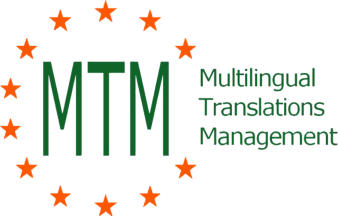© 2023. Multilingual Translations Management
Translation
Computer-Aided Translation (CAT) Computer-Aided Translation (CAT) We are used to working with various CAT applications. SDL Trados, being the dominating translation tool in the market, is most commonly used and requested by our clients. These supporting applications offer semi-automated and cost-saving functionality. They allow us to translate with greater consistency, re-use existing translations, and compile client-specific terminology databases. Furthermore, these professional applications protect the existing coding, graphics, indices, and tabel of contents of your files. Translation Memory (TM) The principal behind a Translation Memory is that an identical text segment - usually a sentence - does not have to be translated twice. It is automatically translated the same way, thus improving consistency. The use of Translation Memory fuctionality has taken a giant leap in the last decade. The client reaps the benefit of considerably lower pricing. It should be noted, however, that CAT applications are at their best when translating technical documentation, help texts, and software strings. They are less suited for translation of marcom related texts, like brochures, white papers, and press releases. Qualified Translators We work exclusively with academically-trained and qualified translators who only translate into their native language and, preferably, live and work in the country of their mother tongue. Language is alive and evolves constantly. It is, therefore, important for a translator to live in the natural habitat of his/her native language.Localization
An integral part of globalization Localization is in fact an integral part of the overall process called Globalization. As the Localization Industry Standards Association once defined it: To globalize is to plan the design and development methods for a product in advance, keeping in mind multi-cultural audience, in order to avoid increased costs and quality problems, save time and smooth the localization effort for each region or country. There are two primary processes to be distinguished: The internationalization phase Planning and preparation during the design phase to support global markets. Any country- or language-specific is stored separately so it it can be easily adapted. This will save fixing time during localization. The localization phase The actual process of adapting a product for a specific market. The localization phase involves, among other things, linguistic, physical, business, cultural, and technical issues. As compared to translation, localization addresses significant, non-textual components of products or services, like adapting graphics, adopting local currencies, using proper date formats, applying different colors, up to re-thinking the structure of a product. It is all about recognizing local sensitivities, avoiding cultural conflicts, and supporting a smooth merge into the local market.Transcreation
Maximizing cultural relevance Transcreation or creative translation is more than just translation. It is about taking the essence of a message and recreating it in another language, while respecting culture, heritage, local values, beliefs, dialect, idiom, humor, and context. Transcreation was developed to avoid the pitfalls inherent in cross-cultural marketing. Cultural boundaries can be formidable barriers to communication. Mistakes may damage the brand in ways that can be difficult to repair. Using words that have different meanings in different languages can also lead to trouble. Wordplay and idiomatic speech are exceedingly difficult to bring from language to another. Transcreation expands upon translation by focusing not so much upon the literal text, but on discerning the emotional response by viewers in the source language and working to elicit the same response from viewers in the target language. It is taking a concept in one language, and completely recreating it in another. Fidelity to the source text is secondary to transcreate the desired emotional response by the target audience























